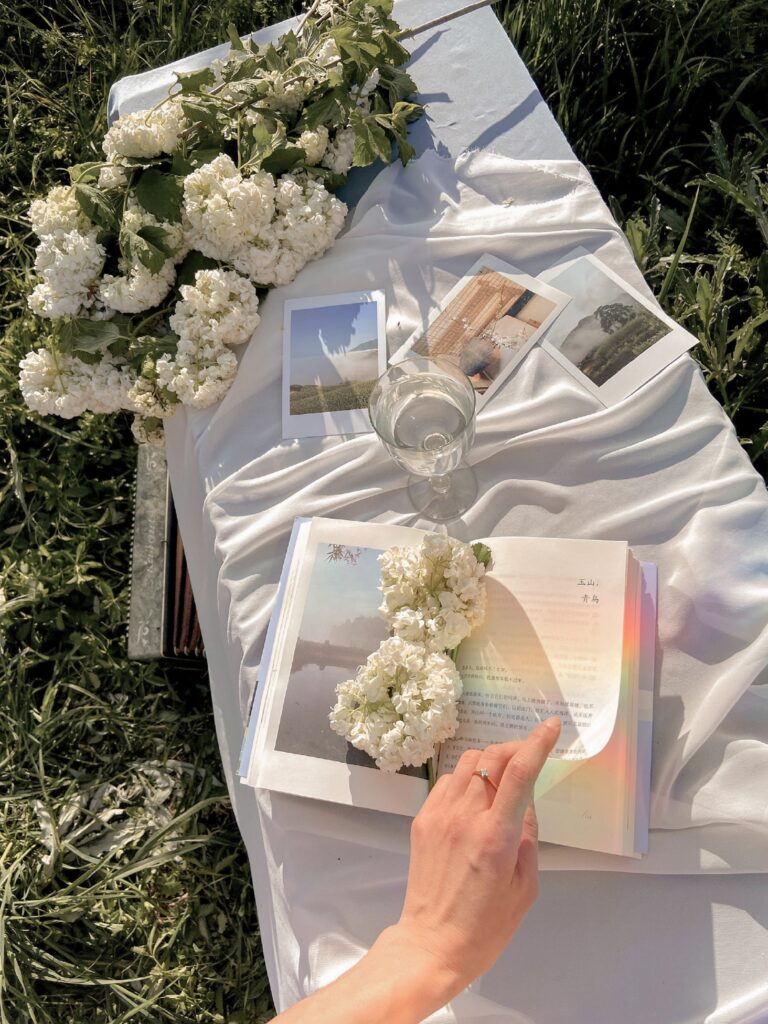Exploring Gothic Literature: Unraveling Its Spooky Connection to Halloween
When you open a book with creepy castles, mysterious monsters, or scary secrets, you’re entering the world of Gothic Literature. It’s a type of storytelling filled with all things spooky. What’s fascinating is that this kind of storytelling has a special connection to Halloween, the night when we love to enjoy a good scare. In this fun and enlightening journey, let’s uncover the spooky ties between Gothic Literature and Halloween!
Origins of Gothic Literature
In the world of stories, there are many types. One that you might find extra exciting is Gothic literature. This type of story first appeared when people wanted to tell tales that were thrilling and dark, with things like haunted castles and spooky ghosts.
Placement of Gothic literature in History
Let’s step into our time machines, because to learn about Gothic literature, we need to go back in time. Way back. Gothic literature started in the late 18th century, in a time we call the Late Middle Ages. That’s over 200 years ago!
Founders and key figures of Gothic literature
The people who started writing these spooky stories are important too. There were many, but some of the most famous are Horace Walpole, who wrote the first known Gothic story, ‘The Castle of Otranto’, and Ann Radcliffe, who wrote many exciting tales, full of mystery and horror.
Genres and themes in original Gothic works
In the beginning, Gothic stories were full of haunted buildings, spooky landscapes, and scary events, usually happening at night. Sometimes, the heroes or heroines would also find themselves in situations that made them feel very scared or worried. All this added a lot of suspense to the stories, which made them very exciting to read.
Characteristics of Gothic Literature
What makes Gothic literature special? Well, there are several ingredients that go into this particularly spooky soup.
Element of fear and horror
First, these stories stay true to their roots — they love to include things that make you jump or shout, “EEK!” Creepy sounds, unexpected surprises, and creepy creatures are all standard fare.
Use of supernatural beings and events
Ghosts, witches, vampires, oh my! Gothic literature doesn’t shy away from using supernatural beings or events. They’re like the cherries on top of the Gothic literature sundae.
Haunting and eerie settings
Next, the settings of these stories aren’t your ordinary places. You won’t find sunny beaches or lovely meadows here. Instead, you’ll see dark forests, abandoned castles, and mysterious ruins.
Dark romanticism and emotional extremes
Finally, Gothic stories often involve very intense emotions, like fear, love, or anger. These emotions can make the stories feel really powerful and dramatic.

This image is property of images.pexels.com.
Why Gothic Literature Resonates with Halloween
Why do we love reading Gothic novels around Halloween?
Themes of death and decay
It’s because they share many of the same themes. Halloween and Gothic literature both love to explore the mysteries of death and decay.
The fear factor: the thrill of being scared
Both Halloween and Gothic literature are all about the spooky and the scary. Have you ever jumped out from behind a corner to scare someone, and then laughed about it afterward? That’s the kind of thrill Gothic literature can give you.
Supernatural elements: witches, ghosts and demons
Again, both Halloween and Gothic literature love using supernatural elements. Have you ever dressed up as a witch or a vampire for Halloween? That’s probably thanks to Gothic literature!
Evolution of Gothic Literature Over Time
Gothic literature, like everything, has changed over time.
Transition from classic Gothic to modern interpretations
It started with spooky tales set in haunted castles, but nowadays it can include everything from modern horror films to TV shows about vampires.
Influence of societal changes on Gothic themes
As society has changed, so too has Gothic literature. For example, in the past, many Gothic stories featured damsels in distress, but today’s Gothic literature includes strong, brave females, proving that anyone can face their fears.
Diversity in modern Gothic literature
Today, you can find Gothic stories in many different forms, which makes it really fun to explore. For example, there are movie adaptations, novels, and even video games. All of these share the Gothic theme of dark mystery and suspense.

This image is property of images.pexels.com.
Famous Works of Gothic Literature
There are some very famous Gothic stories that you might want to check out.
Overview of ‘Frankenstein’
“Frankenstein” is one of the most famous Gothic novels. It’s about a scientist who creates a monster, and then has to deal with the consequences. This chilling tale is a great example of how Gothic literature can use fear and horror to tell a powerful story.
In-depth look at ‘Dracula’
“Dracula” is another iconic Gothic story. This novel is about a vampire who moves to England, causing a lot of fear and panic. It’s a thrilling read, filled with suspense and adventure.
Exploring ‘The Fall of the House of Usher’
Written by Edgar Allan Poe, “The Fall of the House of Usher” is another masterpiece of Gothic literature. This short story is about a brother and sister living in a creepy, decaying mansion. The eerie setting and mysterious happenings make it a truly Gothic tale.
Analyzing Halloween-centric Gothic Literature
Some Gothic novels have a special connection to Halloween.
Focus on ‘The Legend of Sleepy Hollow’
For instance, “The Legend of Sleepy Hollow” is about a headless horseman who haunts a small town. This story is fun to read around Halloween because it includes a lot of spooky elements, like ghosts and curses.
‘The Turn of the Screw’: a reading in darkness
Another great read for Halloween is “The Turn of the Screw,” a spooky story about two children and their strange happenings at a country estate in England.
Detailing ‘Salem’s Lot’ and its Halloween connections
Finally, “Salem’s Lot,” by Stephen King, is a chilling story about a small town overrun by vampires. This novel is perfect for Halloween, thanks to its creepy atmosphere and supernatural theme.

This image is property of images.pexels.com.
Halloween Traditions and Their Gothic Roots
Have you ever wondered why we do certain things on Halloween? Many of these traditions come from Gothic literature.
The history of ghost stories
Why do we tell ghost stories on Halloween? It’s all thanks to Gothic literature! These spooky tales helped create the tradition of sitting around the fire and sharing scary stories.
Symbolism of costumes: from ghouls to vampires
Dressing up in scary costumes on Halloween also has its roots in Gothic literature. The monsters, ghosts, and witches we dress up as come from these spooky tales.
Jack-o’-lanterns: lighting the way for lost souls
Even our tradition of carving pumpkins comes from a Gothic story about a man called Jack, who tricked the devil and was doomed to roam the earth with only a lantern to light his way.
Interpretations of the Gothic Genre in Film and Television
If reading isn’t your thing, don’t worry! You can still enjoy Gothic literature through film and television.
Classic Gothic horror films
From the silent classic “Nosferatu” to Alfred Hitchcock’s “Psycho,” there are numerous horror films that take inspiration from Gothic literature.
Modern representations of Gothic in TV series
Gothic literature has also greatly influenced TV series. Have you watched “Buffy the Vampire Slayer” or “Stranger Things”? These popular shows take a lot of inspiration from Gothic novels.
Spooky kids’ shows: Gothic for all ages
Even children’s shows like “Scooby-Doo” and “Gravity Falls” contain elements of Gothic literature, from haunted houses to mysterious happenings, proving that Gothic can be fun for all ages.
Influence of Gothic Literature on Modern Halloween Celebrations
Gothic literature not only influenced Halloween traditions, it continues to shape how we celebrate Halloween today.
From literature to life: how Gothic influences Halloween decor
From haunting tombstones in yards to cobwebs in doorways, much of our Halloween decor is inspired by the creepy settings found in Gothic literature.
Themes of Gothic literature in Halloween parties and events
Many Halloween parties also take cues from Gothic literature. Think about the spooky costumes, the creepy music, and the haunted house decorations. Doesn’t that sound like something straight out of a Gothic novel?
Influences on Halloween-themed films and animations
Even your favorite Halloween movies and cartoons have been influenced by Gothic literature. From Tim Burton’s beautifully macabre films to the classic, spooky essence of “The Nightmare Before Christmas,” the influence of Gothic literature is clear.
The Halloween Junkie Take
As a Halloween junkie, Gothic literature holds a special place in my heart. Not only does it give me a good scare, it also provides endless inspiration for my Halloween celebrations.
Personal experiences with Gothic literature and Halloween
From dressing up like Dracula to reading “Frankenstein” by pumpkin light, experiencing Gothic literature has definitely made my Halloweens spookier and more fun.
The engaging creepiness of Gothic tales
There’s nothing quite like the chill you get when reading a Gothic tale. The suspense, the fear, the thrill – it’s like riding a spooky roller coaster without leaving your cozy bed.
Why Gothic literature is a Halloween must-read
All things considered, I firmly believe that Gothic literature is a Halloween must-read. Not only does it capture the spooky spirit of the season, it also allows you to safely experience fear and thrill. After all, who doesn’t love a good scare?
Exploring Gothic Literature: Unraveling Its Spooky Connection to Halloween Read More »

